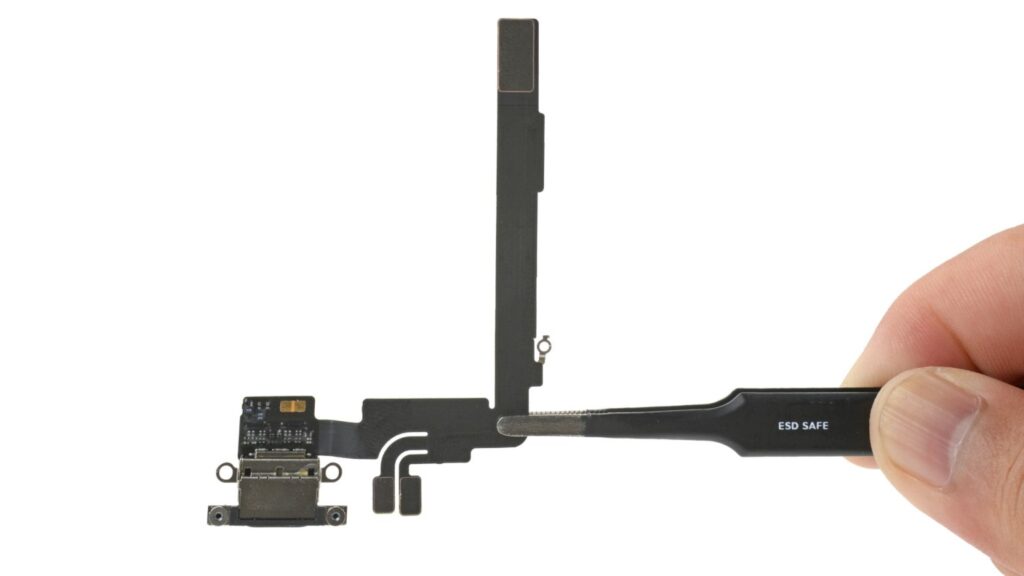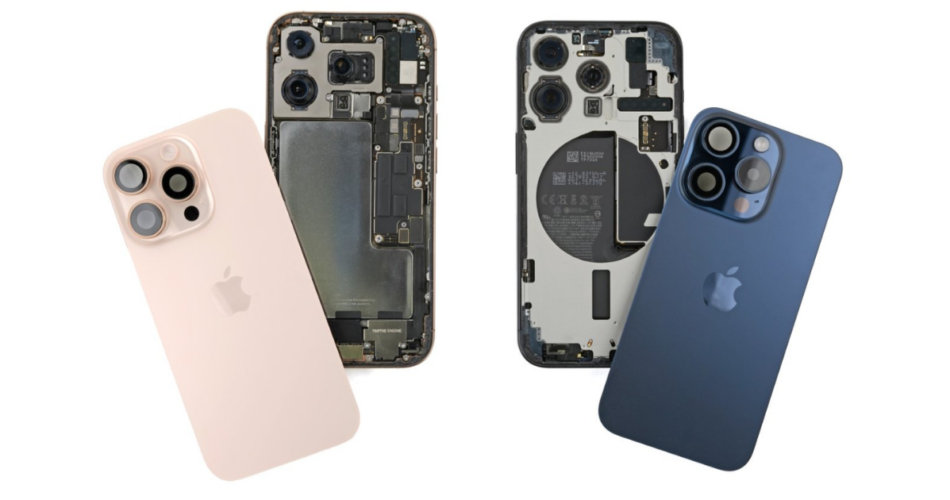The iPhone 16 and iPhone 16 Pro lineup showcases some of the most significant refinements in repairability that Apple has made in recent years, a shift that was highlighted in iFixit’s teardown reports.
These reports, which offer a detailed look into the internal structure of the devices, reveal several changes that simplify the disassembly and repair processes, catering to the growing demand for repair-friendly designs in consumer electronics.
Battery
One of the most striking revelations from the teardown of the iPhone 16 and iPhone 16 Plus is the introduction of a new battery removal mechanism. Unlike previous models that relied on traditional pull-tab adhesive, the iPhone 16 and 16 Plus use electrically-released adhesive to secure the battery. This innovation allows for a much easier battery replacement process. By applying a low electric current to the adhesive, it releases its grip on the battery without the need for excessive force or risk of damaging components, a game-changer in repairability.

iFixit praised this new process, calling it “one of the easiest battery removal systems in the industry.” This represents a major departure from the challenging battery replacements of older iPhone models, which often resulted in damage to surrounding components if not handled delicately.
While the iPhone 16 and 16 Plus benefit from this new electrically-released adhesive, the more premium iPhone 16 Pro and Pro Max models do not feature this simplified battery removal method. Instead, these devices stick to the traditional pull-tab adhesive, which requires technicians to stretch and pull the tabs to remove the battery carefully. The iPhone 16 Pro does have an additional layer of safety, as its battery is encased in a metal shell, offering puncture resistance and a more secure repair process. This metal encasing reduces the risk of short-circuiting or fire if the battery is accidentally punctured during disassembly.
Curiously, the iPhone 16 Pro Max does not share this same battery encasement, leading iFixit to label Apple’s decision as “perplexing.” While the exact reasons for this discrepancy remain unclear, it’s speculated that Apple may be experimenting with different designs before rolling out a consistent solution across its entire lineup.
Camera system modular design
Another key finding in iFixit’s teardown is the modular nature of the iPhone 16 Pro’s internal components, particularly in the camera system. While the camera modules between the iPhone 16 Pro and Pro Max are nearly identical, they are not interchangeable due to minor differences, such as the length of internal cables and the positioning of screws. Despite this limitation, the modular design marks a significant improvement in making component replacements easier.

Apple has also repositioned the LiDAR scanner in the iPhone 16 Pro models, making it more accessible for repairs. In previous models, the LiDAR scanner was located beneath the main camera assembly, complicating repair efforts. Now, with easier access, technicians can repair or replace the sensor without needing to remove as many components, streamlining the process.
Camera Control and mmWave antenna compromise
The iPhone 16 Pro models also feature a notable redesign to accommodate the new Camera Control button. To make space for this new hardware, Apple had to remove one of the mmWave 5G antennas. In earlier models, the mmWave antenna occupied the same space as the new button, but in the iPhone 16 Pro, Apple relocated the antenna to a hollowed-out section near the top of the device. This repositioning might affect mmWave signal performance, especially considering the Pro models’ titanium frames, which can interfere with signal reception. However, iFixit notes that the real-world impact may be minimal, as mmWave 5G technology has limited availability and is rarely used by most consumers.
USB-C Port and Logic Board Accessibility
Another area of improvement in the iPhone 16 Pro models is the ease of accessing and servicing the USB-C port. Apple has simplified the removal process, making it more straightforward than in previous models. However, iFixit points out a significant limitation: while the USB-C port is easier to replace, Apple does not sell replacement ports separately, meaning independent repair efforts might still be hindered.

Additionally, the logic board in the iPhone 16 Pro can now be accessed with the removal of just the upper speaker assembly, a design refinement that reduces the complexity of repairs and minimizes the chances of damaging other components during disassembly.
Repairability scores
Thanks to these design changes, iFixit awarded the iPhone 16 lineup a 7 out of 10 repairability score—an impressive jump from the iPhone 15 series, which scored a 4 out of 10. The improved accessibility of internal components, the modular design, and Apple’s decision to publish repair manuals on day one have contributed to this high score.
Check out the full teardown below:
Subscribe to our email newsletter to get the latest posts delivered right to your email.

